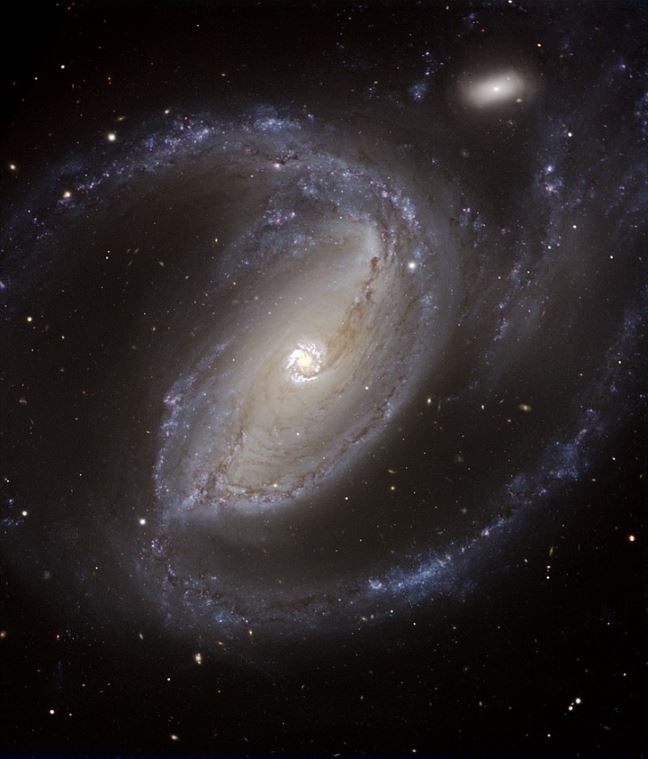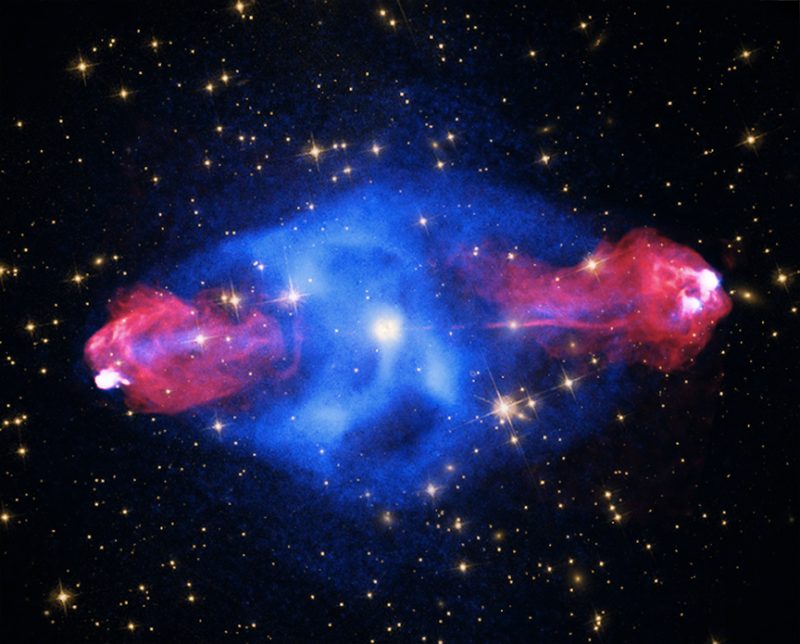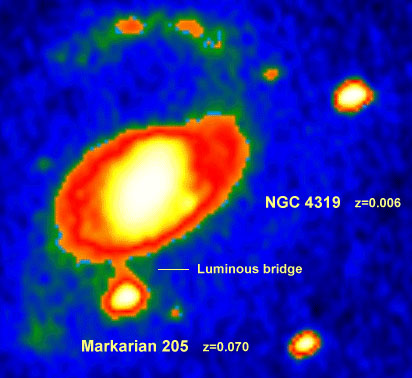© 2001 Ken Glasziou
© 2001 The Brotherhood of Man Library

The answer to that is yes. Despite the almost fanatical adherence of the science establishment to the validity of the Big Bang concept, there are dissenters. However human nature is such that they find it exceedingly difficult to have their work accepted for publication. As with most human activities, behind the science scene there stands reputation and power, as well as money. And money means politics which means power concentration with the few. Buck them and you will suffer.
Curiously, for the principal difference between the Big Bang and its major alternatives there is one small but vital difference. How long does it take for matter particles emerging from relatively undifferentiated energy to gain mass. The Big Bang has it all happen at the very first moments of time. That imposes on the subsequent theory a fifteen billion year interval to get us to “now.”
One competing theory, the Quasi-Steady State Cosmology (QSSC) belongs mainly to the Brits—the Burbidge husband and wife team, the recalcitrant Fred Hoyle, and Empire survivor, the brilliant Indian Jayant Narlikar. A modification of QSSC stems from another rebel, Halton Arp, who disputes that the red shift of light from distant stars means higher recessional velocity and increased distance from us.
The primary difference between Hoyle et al., and Arp concerns the birth of matter. Hoyle and co-workers have it emerging from the vacuum with all of its mass but Arp allows time for the mass of a particle to grow and accumulate.
This difference between the three in regard to the time taken to gain mass has some spectacular consequences. And it appears that all groups are relying on an undiscovered Higgs boson to bring mass to their matter particles. The difference is how and when.

The Big Bangers are stuck with the Higgs giving them mass at the very beginning of the creation. They have nowhere to move from there. Hoyle et al., have matter emerging continuously from the vacuum and presumably the Higgs boson does its job at the moment of emergence. But Arp is unique. He has the mass of each particle grow over an extended period of time.
The great advantage of Arp’s idea is that matter gets born with zero mass. Initially it can travel at the speed of light. This makes sense for problems associated with what we call quasars.
These appear to owe their birth to something funny going on at the heart of many galaxies. There, a conjectured Black Hole spews out enormously high temperature, high energy, and high speed superfluid-like jets at right angles to the plane of the mother galaxy.
Eventually these jets appear to give birth to new companion galaxies. But neither the Big Bang, nor Hoyle et al’s QSSC, have an explanation for how particulate matter associated with such high speed, high temperature and high energy jets can exist if their matter particles have their full complement of mass. It is here that Arp’s newly born zero mass particles come into their own. They can travel at the speed of light without having to be pumped up with an infinite relativistic mass having an impossible requirement for finding the energy to do so.
Arp’s scheme has another advantage. It can explain the anomalously high red shifts associated with proto- and companion galactic materials that are measured for bodies associated with the jets from the mother galaxy. This despite the fact that they are at almost the same distance from us as their mother galaxy, which may have a red shift considerably lower than her apparent offspring.
Arp’s scheme claims that new born zero mass atomic electrons, for example, would require much less energy to promote them to higher energy levels. So the photons they later emit when they fall back to their initial state will also have less energy, and therefore a longer wave length. Thus their photons will display a red shift when compared with electrons from the same kind of atom performing in the same way but having their matured level of mass.
¶ What fits with The Urantia Papers?
Both the Arp scheme and the Urantia papers are dismissive of extraordinarily large red shifts associated with far distant, high velocity objects.
Arp’s scheme provides an explanation other than that provided by the Hubble recessional velocity interpretation. But to give Hubble his due, he never did propose that recessional velocity was the only explanation for the red shift phenomenon.
However the Big Bang cannot get by without it. And so it comes up with what appear to be impossibly enormous outpourings of energy from objects called quasars. Sometimes these enormous outbursts fluctuate violently over intervals as short as two hours. Hence, if far from us, they must be associated with volumes no larger than our solar system, the distance a light signal could traverse in that time.


Arp’s alternative proposes that these aspects of red shift are simply a function of the age of the particles that are the source of the photons detected by our telescopes. This gets rid of the impossibly high energy outpourings of quasars which, according to Arp, is due to the false distance from Earth that the Big Bang’s red shift recessional velocity idea must attribute to them.
¶ What about space respiration?
The Papers tell of expansion and contraction phases in space that are given the name space respiration. In 1993, Hoyle, Burbidge, and Narlikar proposed a new version of Hoyle’s much older steady state theory about the universe. The new version has matter continually creating itself and the universe expanding as it does so. Included in their scheme is a periodic oscillation during which the universe contracts, the oscillations being superposed upon the overall expansion. Which, very approximately, is about what the Papers say. Apparently the Hoyle et al scheme also explains many contradictions inherent in the Big Bang model.
Suffice it to comment that this is a marvelously gifted team, not a group of wild speculators. Hoyle, with the Burbidges, laid the foundations for understanding the generation of elements in the stars. Many of Hoyle’s peers believe his work in the 1950’s was deserving of the Nobel prize.
¶ Relativity and the Papers
“Let not your dabblings with the faintly glimpsed findings of “relativity” disturb your concepts of the eternity and infinity of God.” (UB 195:7.5)
Many Urantia Book readers believe certain of the remarks in the Papers that use the term “relativity” refer to Einstein’s General Relativity. This belief may be misplaced. However those who do so may be relieved to know that Arp’s model of the creation does away with the need for the curvature of space-time that is basic in Einstein’s general relativity.
These quasi-steady state views provide a much closer fit to Urantia Book cosmology than does a Big Bang beginning. But only the accumulation of observational evidence will reveal which, if any, of the models approximates to the truth. So it is a wait and see assignment.
¶ References
- Arp, H., (1998). Seeing Red. Red Shifts, Cosmology, and Academic Science. (Apeiron, Montreal)
- Hoyle, F., Burbidge, G, and J. Narlikar. (1993) ibid.
¶ External links
-
Exploring the Cosmos. Lectures from University of California, Irvine. https://faculty.humanities.uci.edu/bjbecker/ExploringtheCosmos/lecture20.html